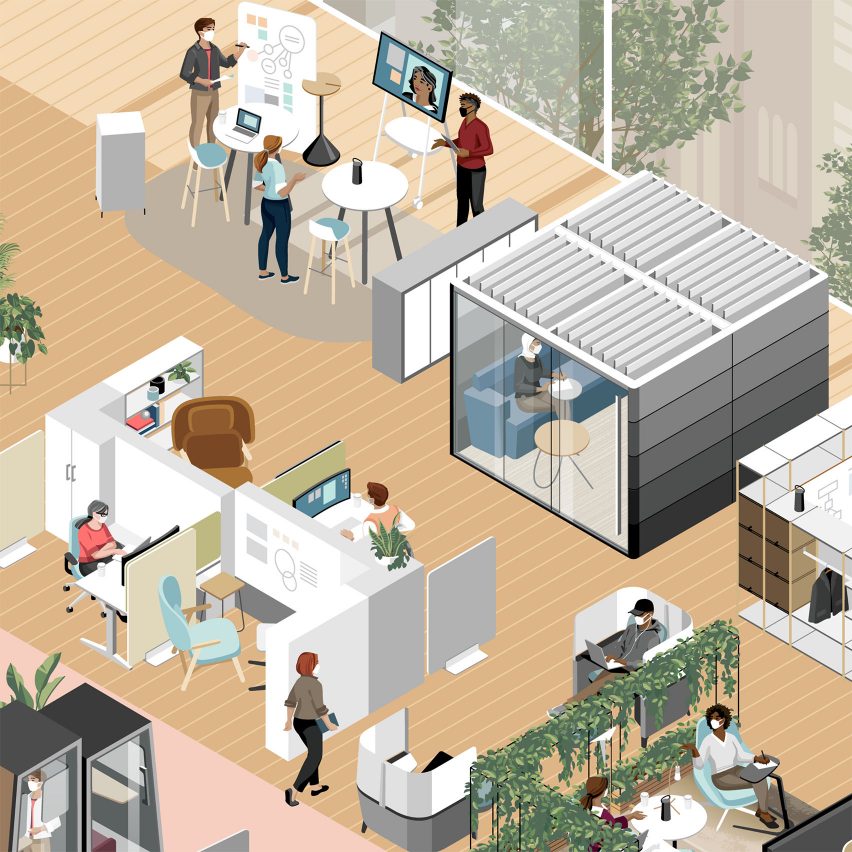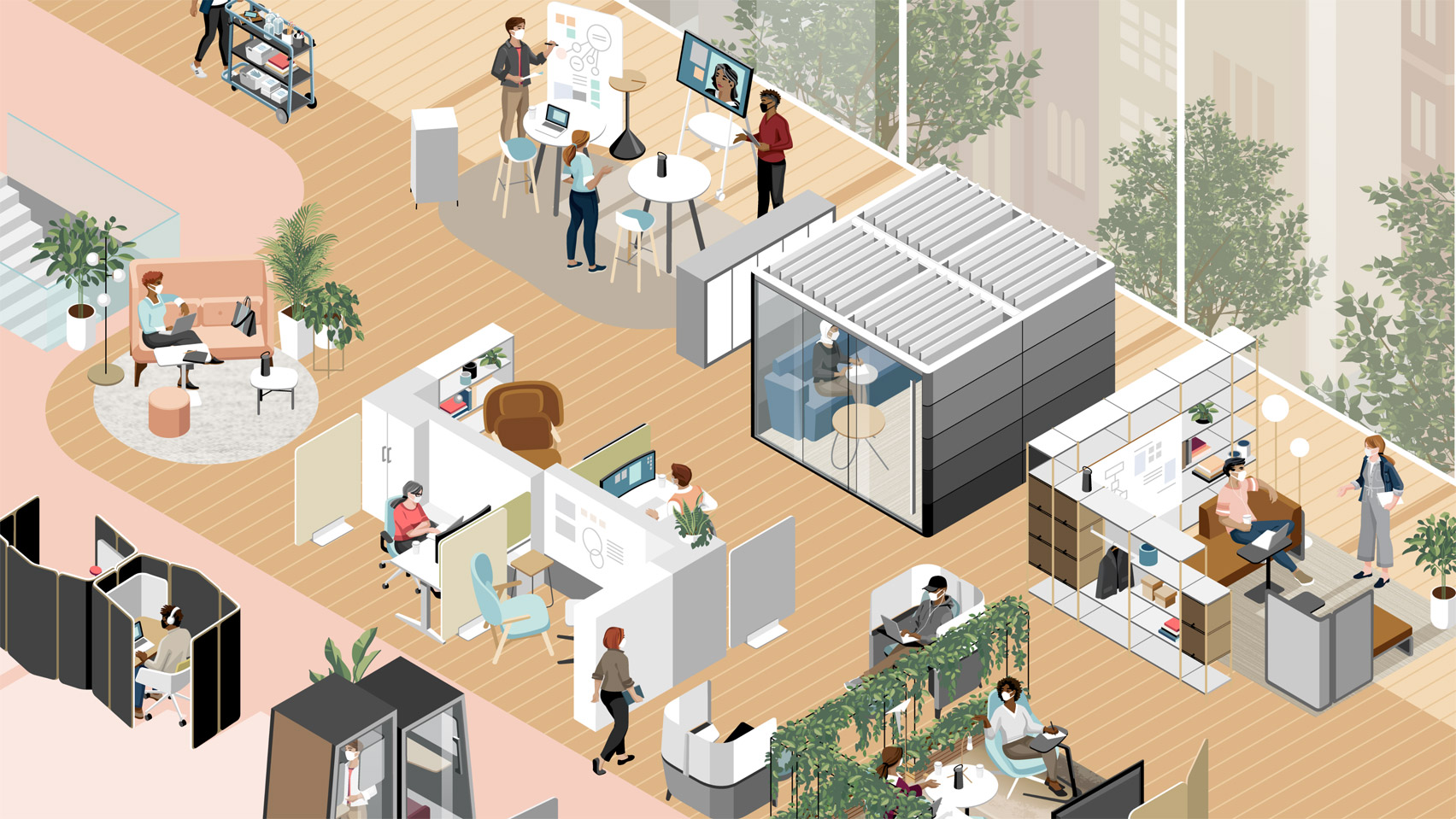
Dezeen promotion: the majority of employees expect to return to the office for at least four days a week post-pandemic, according to research from workplace leader Steelcase.
The Steelcase Global Report forecasts that hybrid working will become the norm for companies all around the world after Covid-19 safety restrictions are lifted.
Despite the rise of working from home imposed by the pandemic, the research suggests that the office will soon reclaim its status as the primary work location.
However it also suggests that most companies will adopt long-term flexible working policies, so that staff can continue working from home some of the time.
“A more nuanced, hybrid future”
The report engaged 32,000 people and conducted work in 10 countries, bringing together multiple primary studies. The majority say they expect to spend more time working in the office than at home in the future. In seven out of 10 countries, more than half of people surveyed say they expect to work from home one day a week or less.
“While some headlines suggest the office will go away as people embrace working from home almost exclusively, the research identifies a more nuanced, hybrid future,” reads the report.
“Most people expect to work in the office most of the time, but they also expect greater flexibility from their organisations going forward.”

The research also found that 87 per cent of company leaders in September 2020 expected to allow more flexible working than previously. This is a significant increase from April 2020, just after the pandemic began, when only 63 per cent saw a need to change their working policies.
Introducing flexible models
Overall, 72 per cent of all business leaders surveyed anticipate embracing an “emerging hybrid model”, with employees splitting their time between the office and another location, which could be their home or a third place.
Only five per cent of business leaders expect their employees to work from home exclusively – an increase of just two per cent since the start of the pandemic – while 23 per cent believe they would return to working exclusively from the office.
“The global experiment in working from home is shifting to become an experiment in hybrid work,” reads the report.
“As organisations consider the right approach for their people and their culture, predictions that people will work exclusively from home are being passed over for more flexible options.”

The survey also revealed that some companies are exploring different options for flexible working beyond their main offices/campuses, such as satellite offices or co-working facilities.
According to the research, countries where business leaders are more likely to embrace a hybrid working model include India, China, the UK and the US.
The figures were lower in France and Germany, which are described as countries with “strong office-based work cultures”. The same trend was reflected in the data from employees – these were the only countries where more than 70 per cent of people expected to spend at least four days a week in the office.
Finding the right flexible working policies
The Steelcase Global Report also reveals that people’s experiences of working from home during the pandemic were widely varied, based on factors that include geography, industry, job type and job level, as well as their work-from-home conditions.
It identifies five different personality types, each with different attitudes and patterns of behaviour.
These include: Overworked Caretaker, a person juggling work responsibilities and family needs; Relieved Self-Preservationist, who believes the home is the only place that offers psychological safety; Frustrated Creative Networker, who thrives on face-to-face interactions; Autonomy Seeker, who find working from home more productive; and Isolated Zoomer, who requires separation to maintain a healthy live-work balance.

Based on these findings, it recommends that companies consider how to address the variety of needs and expectations employees have moving forward.
“The global experiment in working from home has shown it can be part of a viable work policy, but it requires each organisation to consider its own culture, processes, technology infrastructure and real-estate strategies,” reads the report.
“Leaders need to consider what policy is right for individuals, teams and the organisation overall.”
The full report is available to read or download on the Steelcase website.
Partnership content
This article was written by Dezeen for Steelcase as part of a partnership. Find out more about Dezeen partnership content here.
The post Home, office and hybrid: the future of work is nuanced, finds Steelcase appeared first on Dezeen.
